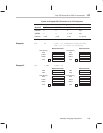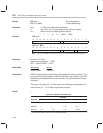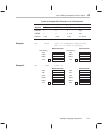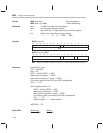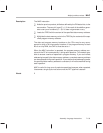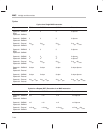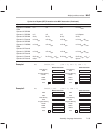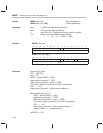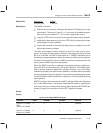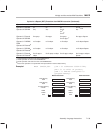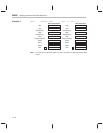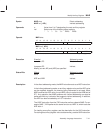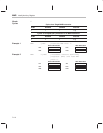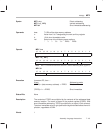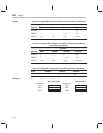
Multiply and Accumulate With Data Move
MACD
7-107
Assembly Language Instructions
Status Bits
Affected by Affects
PM and OVM C and OV
Description The MACD instruction:
Adds the previous product, shifted as defined by the PM status bits, to the
accumulator. The carry bit is set (C = 1) if the result of the addition gener-
ates a carry and is cleared (C = 0) if it does not generate a carry.
Loads the TREG with the content of the specified data-memory address.
Multiplies the data-memory value in the TREG by the contents of the spe-
cified program-memory address.
Copies the contents of the specified data-memory address to the next
higher data-memory address.
The data- and program-memory locations on the ’C2xx may be any nonre-
served, on-chip or off-chip memory locations. If the program memory is block
B0 of on-chip RAM, the CNF bit must be set to 1. If MACD addresses one of
the memory-mapped registers or external memory as a data-memory location,
the effect of the instruction is that of a MAC instruction; the data move will not
occur (see the DMOV instruction description).
When the MACD instruction is repeated, the program-memory address con-
tained in the PC is incremented by 1 during each repetition. This makes it pos-
sible to access a series of operands in program memory. If you use indirect
addressing to specify the data-memory address, a new data-memory address
can be accessed during each repetition. If you use the direct addressing mode,
the specified data-memory address is a constant; it will not be modified during
each repetition.
MACD functions in the same manner as MAC, with the addition of a data move
for on-chip RAM blocks. This feature makes MACD useful for applications
such as convolution and transversal filtering. When used with RPT, MACD be-
comes a single-cycle instruction once the RPT pipeline is started.
Words 2
Cycles
Cycles for a Single MACD Instruction
Operand
ROM DARAM SARAM External
Operand 1: DARAM/
ROM
Operand 2: DARAM
3 3 3 3+2p
code
Operand 1: SARAM
Operand 2: DARAM
3 3 3 3+2p
code



